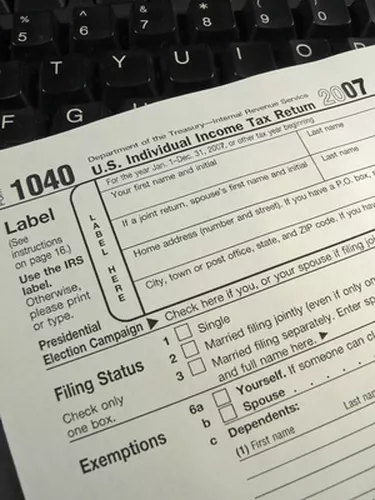
Paying income taxes can be an expensive undertaking that reduces your ability to save money or spend what you earn on personal goods and services. But taxes also fund some of the government's essential programs, and complying with the tax code can keep you from enduring audits and fines. Tax credits and rebates ease the burden of income taxes, placing more money in your pocket.
Definitions
Video of the Day
A tax credit is a tax allowance that the federal or state government allows certain taxpayers who meet eligibility guidelines to subtract from the amount of tax they owe in a given year. Tax credits apply to certain behaviors, such as purchasing an energy-efficient vehicle or buying a new home.
Video of the Day
Tax rebates are payments that the federal government makes following a tax period. Rebates give back a portion of the money taxpayers submitted earlier. Rebates are different from refunds, which occur whenever taxpayers owe less than they had withheld from paychecks during the year.
Timing
Tax credits apply to a given tax year, and taxpayers usually must spend the money that makes them eligible for the credits during the calendar year. Some tax credits have deadlines that expire midway through a year. However, all tax credits apply to the income taxes that you file in the early part of the year for the previous tax year. You feel the effect of your tax credits when you submit your tax return in the form of a reduced payment or a larger refund.
Tax rebates can come at any time. The federal government issues rebates as it sees fit, and as economic policy allows. One of the largest rebates in history was the 2008 economic stimulus package, which applied to approximately 130 million taxpayers and occurred over the course of several months in the spring of that year.
Amount
The amount of a tax credit depends on how the credit is structured and how much a taxpayer is allowed to claim. Tax credits have maximum amounts, which represent the most any taxpayer may claim for a given credit. In addition, credits sometimes work in stages, with taxpayers qualifying for a larger credit by spending more.
Tax rebates don't come in any standard amount. Instead, the government determines a policy for computing rebates, either as a flat rate or based on income or taxes owed. For example, the 2008 stimulus rebate paid $600 to each individual and $1,200 to each family, with larger rebates for families with children and smaller rebates for high-earning taxpayers.
Frequency
One of the biggest differences between tax credits and rebates is the frequency with which they occur. Every year the tax code contains several credits that taxpayers can take advantage of. Most credits are temporary, but some are renewed and last for many years. Tax rebates, on the other hand, occur much less often. The federal government may offer a rebate only when lawmakers approve the measure and make the funds available. This restricts rebates to periods of economic need for taxpayers or budget surplus for the government.